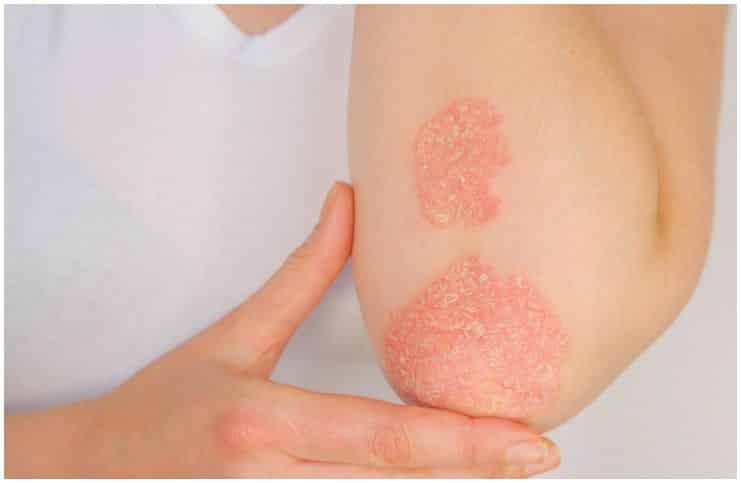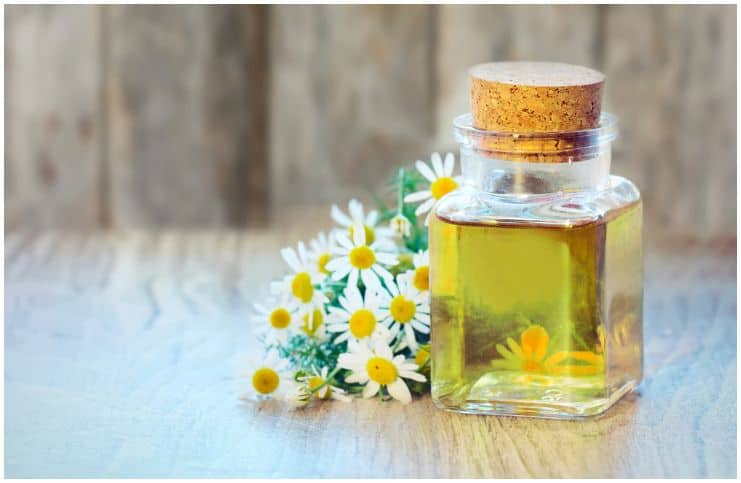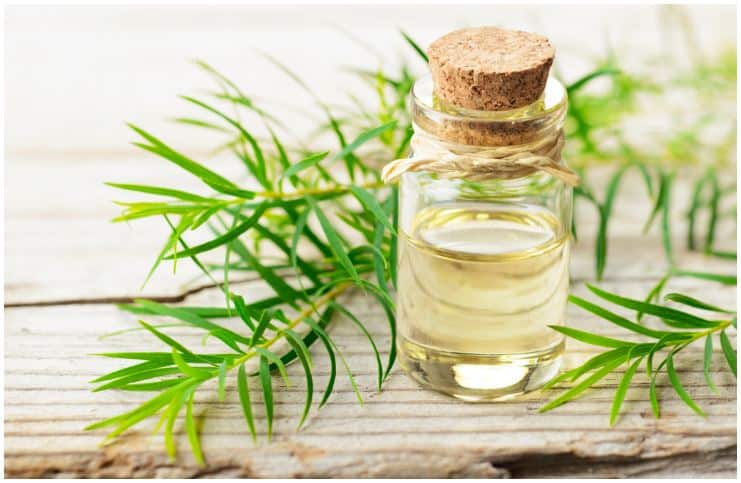13 Essential Oils For Psoriasis Treatment:
Psoriasis is a long-lasting autoimmune disease. Nowadays, autoimmune diseases affect 24 million people and include multiple sclerosis, rheumatoid arthritis, inflammatory bowel disease, thyroid disease, and more.
The annual healthcare cost for autoimmune diseases is $120 billion a year, representing nearly twice the economic healthcare burden of cancer (about $70 billion a year).
Psoriasis is characterized by patches of abnormal skin, which are usually red, itchy, and scaly.
They may vary in severity, from localized and small to complete body coverage. Injury to the skin can trigger psoriatic skin changes at that spot, which is known as the Koebner phenomenon.
Symptoms of psoriasis vary depending on the type. Some typical symptoms of plaque psoriasis include:
- Plaques of scales or crust on the scalp
- Disorders of the toenails and fingernails, including discoloration and pitting of the nails, which may also begin to crumble or detach from the nail bed.
- Plaques of red skin, are usually covered with loose, silver-colored scales; these lesions may be painful and itchy, and they sometimes crack and bleed. In severe cases, the plaques of irritated skin will grow and merge into one another, covering large areas.
The disease may begin at any age and is connected with an increased risk of lymphomas, psoriatic arthritis, cardiovascular disease, depression, and Crohn’s disease. Psoriatic arthritis affects up to 30 percent of individuals with psoriasis.
What are the causes?
The genes that control your immune system signals get mixed up. Instead of protecting your body from invaders as it’s designed to do, it promotes inflammation and turns skin cells on overdrive.
Foods to avoid
Gluten, dairy products, meat, and junk food – high in trans and saturated fats and alcohol are believed to be major suspects in skin disorders.
Essential oils for psoriasis treatment
There is no quick fix for psoriasis. While essential oils can greatly reduce the symptoms of your psoriasis, a complete cure is usually more complicated.
Also, essential oils might provide some natural relief when used over a period of time and, unlike cortisone medications, will not result in any adverse side effects.
#1 Chamomile
Chamomile oil is extracted from the flowers of the Chamomile plant, which is very popular as a flowering plant. Just like the tea brewed from chamomile, the essential oil also comes with tons of benefits and can be used to help relieve the discomfort and symptoms of psoriasis and reduce the appearance of puffy and reddened skin.
#2 Bergamot
Bergamot is a citrus fruit whose rind is used for extracting the bergamot essential oil. The scientific name of bergamot is Citrus Aurantium var. or Citrus Bergamia.
This essential oil is composed of many chemical constituents and includes myrcene, a-pinene, b-bisabolene, limonene, a-bergapten, linalool, neryl acetate, nerol, linalyl acetate, geraniol, a-terpineol, and geraniol acetate.
Therapeutic properties of bergamot oil: anti-spasmodic, antibiotic, analgesic, antidepressant, antiseptic, digestive, calmative, cicatrizant, deodorant, vermifuge, and febrifuge.
#3 Clary sage
Clary sage oil is extracted from the clary sage herb (Salvia sclarea), which used to be found in Italy, Southern France, and Syria. Today it is cultivated worldwide, typically within European regions, including Central Europe, as well as Morocco, England, Russia, and the United States.
Oil of clary sage also contains alcohols (about 14%) and sesquiterpenes (up to 3%). Sesquiterpene caryophyllene and diterpene sclareol are also compounds found in this essential oil, with effective antimicrobial effects.
Health benefits of this oil can be attributed to its properties as an antioxidant, anti-inflammatory, antifungal, antimicrobial, antibacterial, antiseptic, antispasmodic, cholagogue, and choleretic, cicatrizant, digestive, depurative, disinfectant, emmenagogue, febrifuge, expectorant, laxative and stimulating substance.
#4 Melrose
Melrose essential oil is a mixture of 4 different essential oils, each oil bringing its own special benefit to the mix. You can either make the blend yourself or buy it premixed. The oils in Melrose have traditionally been used for soothing skin.
It’s recommended that you dilute Melrose in vegetable oil before application, as it may irritate the skin when applied in its pure form.
#5 Helichrysum
Helichrysum, the flower that contributes to „Everlasting” and „Immortal” essential oil, and known by the names Helichrysum Italicum and Helichrysum Angustifolium, is a European herb native to Italy, France and a few neighboring countries.
Helichrysum italicum extract has been established in many experimental studies to have strong abilities to lower inflammation due to some mechanisms: inflammatory enzyme inhibition, free radical scavenging activity, and corticoid-like effects.
#6 Sandalwood
Sandalwood essential oil (Santalum album) is derived from the steam distillation of the wood from the sandalwood tree. Its woody and earthy aroma are incredibly grounding and rich, but not overwhelming.
Therapeutically, it’s most typically used for healthy skin, the nervous system, bones, and muscles. Sandalwood oil is also high in sesquiterpenes, a naturally occurring chemical substance found in certain essential oils, known for having a positive impact on health and wellness, especially in regards to the brain.
#7 Tea Tree
Tea tree oil, or melaleuca oil, is an essential oil with a fresh camphoraceous odor and a color that ranges from pale yellow to nearly colorless and clear. It is taken from the leaves of the Melaleuca alternifolia, which is native to the Northeast coast of New South Wales, Australia, and Southeast Queensland.
Tea tree oil is an old natural remedy that has been widely used for treating psoriasis and other skin infections and comes from the leaves of the Melaleuca tree. This oil is used as one of the ingredients in many natural skin and body care products.
#8 Thyme
Thyme oil is derived from thyme, also known as Thymus vulgaris. Thyme also has a number of medicinal properties, due to the herb’s essential oils.
Thyme essential oil has robust antiseptic, anti-fungal, and antibacterial properties, which make it the ideal treatment for skin conditions, like athlete’s foot, eczema, and psoriasis. In addition, the oil has natural anti-inflammatory properties and helps reduce swelling and itchiness on the skin. Undiluted thyme essential oil will irritate the skin. Avoid during pregnancy.
#9 Frankincense
Frankincense oil is sourced from the resin of the Boswellia carterii or Boswellia sacara tree that’s commonly grown in Somalia. This tree is different from many others in that it can grow with very little soil in dry and desolate conditions.
Frankincense is also a valuable ingredient in skincare products for dry and aging skin. The ancient Egyptians used it in rejuvenation face masks.
#10 Rosemary
Rosemary oil, with its distinctive woody fragrance, has been used for centuries for a variety of health and beauty benefits. This oil has powerful anti-inflammatory properties that help calm inflammation and soothe the skin. It has antimicrobial properties that help prevent the build-up of bacteria on the skin.
Rosemary essential oil blends well with frankincense, basil, sage, thyme, chamomile, citronella, lemongrass, peppermint, lavender, and eucalyptus essential oil.
#11 Lavender
Lavender is another great essential oil to relieve stress and anxiety. This essential oil is obtained by distillation from the flower spikes of certain species of lavender.
The oil’s calming and anti-inflammatory effects also help soothe swelling, redness and joint stiffness linked with psoriasis. Studies show that lavender oil can reduce dry, scaly skin patches and control pain.
#12 Geranium
Geranium essential oil is produced from the steam distillation of Geranium’s fragrant flowers and leaves. Geranium oil is often compared to the rose essential oil because they share almost the same therapeutic traits.
Geranium oil also functions to reduce inflammation and pain. Its antiseptic properties can help speed up the healing of wounds and treat a variety of skin problems.
#13 Cedarwood
The oil is derived from the bark of a number of trees from the same family, including the Virginian, Red, Eastern Red, and Southern Red Cedar through a process that is also known as steam distillation.
These trees are native to North America, especially cold climates and high altitude areas, and can grow to reach heights over 100 ft. These evergreen trees have been known to age up to 1,000 years and feature needle-like leaves.
This essential oil can be used in a number of ways to benefit the skin. It can relieve eczema, itching, psoriasis, treat acne and cure oily skin issues. Cedarwood blends well with clary sage, bergamot, cypress, rosemary, eucalyptus, juniper berry, and floral essential oils.
Final Words
Avoid using these oils on newborn babies especially if you are pregnant or breastfeeding. Please consult your doctor before using them. Always use a test patch on your inner elbow/wrist with each oil to see if it’s safe for you. Always be sure to follow any instructions that come with the oil with regard to dilution or the amount to be used on the skin.
READ THIS NEXT:
Plant-Based Foods Highest in Zinc
What is conscious nutrition or mindful eating?
Lavender Essential Oil – Side Effects & Health Benefits
Vegetable Foods Highest in Selenium
References https://www.ncbi.nlm.nih.gov/pmc/articles/PMC3919284/ https://www.sciencedaily.com/releases/2016/06/160609174808.htm


